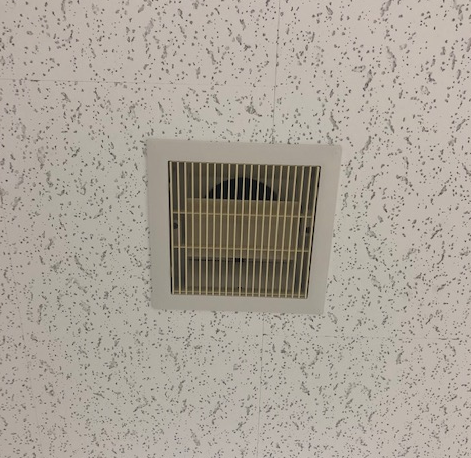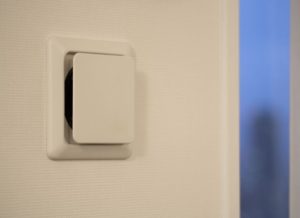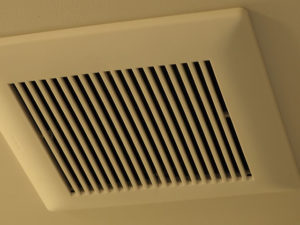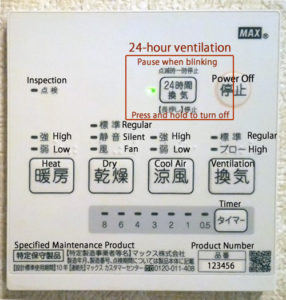Room ventilation is always important to live comfortably in a Japanese house. Most regions of Japan have a humid subtropical climate, and the dampness in summer easily causes mold problems due to improper ventilation. In winter it gets so dry that the air in rooms tends to be unclean with floating dust and virus. Proper ventilation is necessary to keep good sanitation as well as avoiding sick building syndrome. In fact, Japanese law requires the introduction of the house ventilation system.
Why is ventilation necessary?
Room ventilation is done to bring fresh air into rooms and circulate it in housing. The areas with water facilities, such as a bathroom, hold high humidity where a ventilator is used to dry the air. The ventilation in living and dining rooms is done so to purify the air inside.
House ventilation system is required for;
Preventing a health hazard by breathing in allergenic substances
Building materials contain glue or those with volatile chemical substances which may be harmful to health if you breathe in. The building standards law of Japan (BSL) requires the installation of mechanical ventilation equipment “24-hour ventilation system” to reduce the risk of sick building syndrome.
* The housing built before the BSL came into force may not have equipped with the ventilation system.
For damp proof and preventing mold/mite problems
An airtight building easily gets moisture inside, causes mold and mite problems that may bring allergic diseases. People often have such a problem, especially in the wet, rainy season between June and the middle of July.
To reduce the risk of carbon monoxide poisoning
In the case that a gas appliance in your house is not working properly or in failure before you knew it, you will be suffering from carbon monoxide poisoning. It also increases the risk of poisoning when using a kerosene fan heater without ventilation.
To remove viruses floating in the air
In winter, the humidity drastically declines in Tokyo and the surrounding area. In the dry air, viruses can float around and stay longer, and it increases the risk of catching a cold and influenza, meaning the flu season arrives. Ventilation helps to remove germs and viruses outside of the housing.
To deodorize rooms
While the cooking or those house smells linger around rooms, your curtains or wallpaper may have an unpleasant odor before you knew it. Ventilating is one of the best ways to get rid of odors.
Is an air purifier substituted for a ventilation system?
The answer is, “No.” Ventilation is necessary as the air purifier can function well while the ventilator makes airflow in the room. Without the airflow, floating dust gradually comes down and stays in a place somewhere in the room that can hardly be collected by the air purifier. Purifiers can work well if the dust floats in the air by ventilating.
Ventilation System
Since the building standards law (BSL) of Japan has regulated and requires the introduction of systematic ventilation (24-hour ventilation), the buildings built/renovated after the BSL came into force have equipped with the ventilation system.
The ventilation system comprises inlet vent, outlet vent, and ventilator, which creates air circulation to get unclean air out and bring fresh air into rooms.
Inlet vents
The vent to bring fresh air into rooms from outside of the housing. Each inlet vent has a filter.
Outlet vents
The vent to collect unclean air, usually set on the ceiling.
The ventilator collects the unclean air and discharges it outside of the building.
24-hour ventilation system
24-hour ventilation is operated to keep purifying the air
Cleaning the Inlet vent
The inlet vent has a filter to collect dust inside, which is replaceable when it gets dirty. The filter comes in two different types; washable or refillable, depending on the inlet vent to set in.
To clean a washable filter, use warm water with neutral detergent and wash it gently. After rising off, fix the shape with your hands and leave it to dry.
If you don’t like having to wash dirty filters, or in the case of non-washable filters are to use, you can get refills available from the manufacturer. Be sure and purchase filters specified by the manufacturer as the filter’s shape varies depending on the types of their products. Also, note that some filters are for use in cold climate area, and some are for use at three-story houses. The average price of the filter is somewhere between 600 JPY and 1700 JPY for a pack of 5 filters. The special filters that can collect allergens will cost a bit more compared to ordinary filters.
The filter is usually replaced twice a year or so, depending on the environmental conditions.







